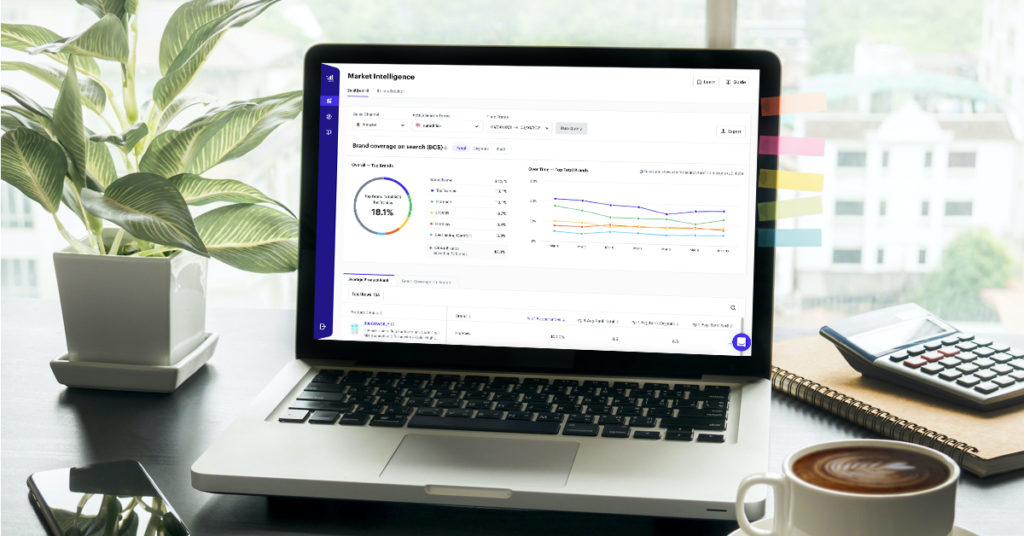Selling on Amazon is a battle you are constantly fighting, both when it comes to managing your own operations, along with adjusting based on your competition. To that last point, many sellers and brand owners hit a snag deciding how to conduct an Amazon competitor analysis. What should be included? What shouldn’t? Which metrics are meaningful?
Below, we’ll outline a clear explanation of what you should focus on when you conduct your competitor analysis for Amazon. Above all, you should keep the underlying goals of a competitor analysis in mind:
- Know your competition. Get a clear view into what brands and products are likely to take consumer dollars away from your brand.
- Know their advantages. Understand what, if any, competitive advantages those brands or products have over yours.
- Know their weaknesses. Account for any key potential weaknesses in the competitive environment that you can take advantage of.
There are many tools, both free and paid, that can help conduct an Amazon competitor analysis. Whatever tool you choose, it should enable you to focus on the following:
What’s the competitive set across each of the products you sell?
- What unbranded search terms do your products show up for? Or where should they be showing up?
- Who are you losing to on top unbranded terms?
- Organically?
- Sponsored?
- Who are you losing to on top unbranded terms?
In a nutshell, the competitor analysis should tell you where your products appear on the “digital shelf.” In brick and mortar retail, products have to appear on a physical shelf to be discovered and purchased. In ecommerce, products have to appear on the digital shelf, usually as a result of entering search terms. You want to know where your products appear relative to your competitors to help determine your strategy for bidding on sponsored placements.
Just like retail products need the exposure of the physical shelf, ecommerce products need the exposure of the digital shelf.
Data Amazon Provides
Getting access to where your products are showing up on the Amazon search page isn’t as cut-and-dry as it seems. Amazon itself doesn’t provide much detail on this for you in Seller Central.
Amazon does provide some impression-level data on where your products are appearing. While accurate, the level of visibility in Amazon’s data is fairly minimal. You won’t really know where your product is positioned when a customer searches for a given search term. Even for Sponsored Products advertisements, you don’t get visibility into whether the ad showed up on the first page, second page, top of the SERP (search engine results page), etc – nor what competitors outbid you.
Data Capture Services
Rather than Amazon’s provided data, ‘data capture’ services give you greater visibility into more granular aspects of your competitive landscape by cataloging actual search results, sales rank data, and other information present on Amazon.com.
However, keep in mind that these solutions are a bit more complex to deploy at scale, and what an individual sees on the Amazon SERP will change based on factors like site history, geographic location, and browser type. Data capture services can control for some of these factors, but to varying degrees.
The best approach is to take exact rankings more as directionally relevant – you want to know who is beating you or close to beating you on the SERP so you can make informed decisions – those shouldn’t change meaningfully if a competitor’s product is #10 vs. #9.
Organic Ranking and Sponsored Ranking
To fully understand your position on the digital shelf, you also need a solution that can differentiate between organic ranking and paid ranking. Organic ranking is affected by many factors, such as listing optimization and reviews.
Ads such as Sponsored Products and Sponsored Brands also boost organic ranking by creating more digital shelf space for your brand. More impressions should lead to more clicks which leads to more purchases which lead to more reviews all of which feed back into Amazon’s algorithm indicating high relevancy of your products.
The images before, screenshots from Teikametrics Flywheel 2.0 market intelligence dashboard, show how Purell dominates for organic search of “hand sanitizer” on Amazon, but other products with less strong brand recognition are able to capture a significant share of the market utilizing paid opportunities.
Screenshots of Flywheel 2.0 tracking the search term “hand sanitizer” on Amazon for organic ranking (above) and paid ranking (below).
What Unbranded Terms Are Attracting Customers?
Whatever reporting you use, make sure you identify what unbranded terms are driving significant volume already. This could be either firsthand from your own data, or via Amazon’s Brand Analytics data that provides the rankings of a given search term for a category by day, week, or month.
This way you understand both what terms are already attracting customers to your products, along with related unbranded terms where you may want to advertise or adjust your product content to better address customer needs.
Who Is Bidding Against Your Branded Terms?
Once your brand has gained traction on Amazon, it’s only a matter of time before competitors begin targeting ads against your branded keywords. Brand defense is important, but it helps to also understand who you are up against.
Data capture services can help monitor this, and ideally, you’d want to draw this data at least once per day if not more frequently to get as robust an accounting as possible of which competitors are bidding against your branded terms. Depending on your business’ needs and competitive landscape, you may want to adjust ad campaign bids in response.
Understanding the Market Dynamics
Having a detailed accounting of your top rivals is only half the battle of conducting a competitor analysis on Amazon. You also need to have a clear understanding of your competitive differentiators against that set so you can craft the most effective strategy. Specifically, you want to focus on areas that have the most bearing on a consumer’s purchase decision.
For each competitor, across each of your products or product lines, ask yourself how you compare on the following, which are ranked largely in order of greatest to least importance:
- Price
- Review count
- Product imagery and enhanced content
- Branded storefront/Brand registry
Where your product and brand stands on each of the above, in comparison to other brands, should shape your strategy. Having the lowest-priced product puts you at a decided advantage over competitors, as Amazon shoppers are generally price-sensitive. Because star ratings are typically in the 3.5-5 range, review counts matter much more, and there is good evidence that more product content on your product detail page helps improve sales.
Being brand registered can be very meaningful if you’re eligible. Having the ability to purchase Sponsored Brands ads, which typically appear at the top of a search results page, is a terrific tool to have in your back pocket when it comes both to brand defense and capturing sales on unbranded keywords.
Sign up for early access to Flywheel 2.0 which will integrate competitive analysis with ads management. For a limited time, get a free Amazon Market Intelligence consultation powered by Flywheel 2.0 technology.





